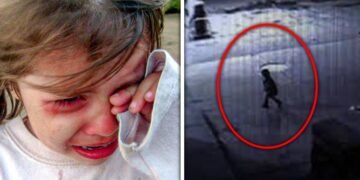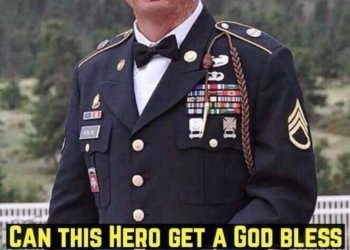In the late 1990s, deep within the pediatric wing of a quiet San Francisco hospital, a nurse paused outside a room, fighting back tears. Inside, a small boy suffering from terminal cancer was doubled over in laughter. Dressed in oversized scrubs, a stethoscope hanging around his neck, and a comical red nose, Robin Williams had the child laughing so hard that, for a brief moment, he forgot the pain. No cameras, no press, no entourage—just Robin, improvising with voices, pulling faces, and imitating cartoon characters, making joy out of thin air.
These visits were never planned by Hollywood or public relations teams. Instead, they were organized privately, often with the hospital staff who had quietly come to know Robin as more than just a famous actor or comedian. He would sometimes call ahead anonymously, asking if there were children who might benefit from a visit. On many occasions, he arrived alone, occasionally bringing a bag of puppets or donning costumes and voices from his iconic roles, even slipping into his unforgettable “Mrs. Doubtfire” character. For children too weak to sit up, his presence brought smiles, giggles, and the chance to laugh again, sometimes for the first time in weeks.

One nurse recalled a visit in 2003 when Robin spent over an hour with a ten-year-old leukemia patient who had only days left. The boy’s father had remained stoic, refusing to cry in front of his son. That day, as Robin pretended to conduct an invisible orchestra with squeaky IV poles and sang an operatic ballad to the beeping heart monitors, the father finally broke down—not in sorrow, but in relief.
Robin never spoke about these visits in interviews. Even his closest friends and colleagues learned about them through word of mouth. Families who were touched by his kindness often tried to thank him publicly, but he always declined. For Robin, these visits were never about charity or recognition—they were simply about connecting with the children in their final moments. It was a pure, unfiltered human connection, a moment of shared joy in the midst of sorrow.
In 2006, while performing in Denver, Robin drove over an hour to visit a terminally ill teenage girl who had grown up loving his portrayal of the Genie in Aladdin. When Robin entered her room and began speaking in that iconic voice, the girl’s face lit up. Her mother later recalled that Robin stayed long after his scheduled time, talking to her daughter like an old friend, listening as much as entertaining.
Robin’s emotional strength was tested each time he stepped into those rooms. These weren’t film sets; there were no rewrites or retakes. The children were often fading, and the atmosphere was thick with grief. Yet, Robin found ways to spark hope, even if only for a few minutes. He would sit on the floor with the children, share ice pops, hold their hands, and simply be present. Afterward, he would often sit in his car alone for a long time, sometimes crying or calling a friend just to hear a familiar voice.
By 2010, hospital staff across the country had come to know that if Robin was in town, there might be an unexpected visit. These moments were never publicized, as Robin didn’t want them to be. It wasn’t about headlines or recognition; it was about making a child smile, even for just a brief moment. He often told the nurses that if he could make a child forget where they were, even for ten minutes, it was worth everything.
Robin’s visits may not have cured diseases or altered medical outcomes, but they did something else—they brought a flicker of joy to children who were fading, softened the hardest moments for grieving families, and reminded everyone in the room that laughter still had power, even at the edge of goodbye.
Sometimes, healing isn’t found in medicine. It’s about making someone feel alive, even for a fleeting moment, when the world insists they shouldn’t.







